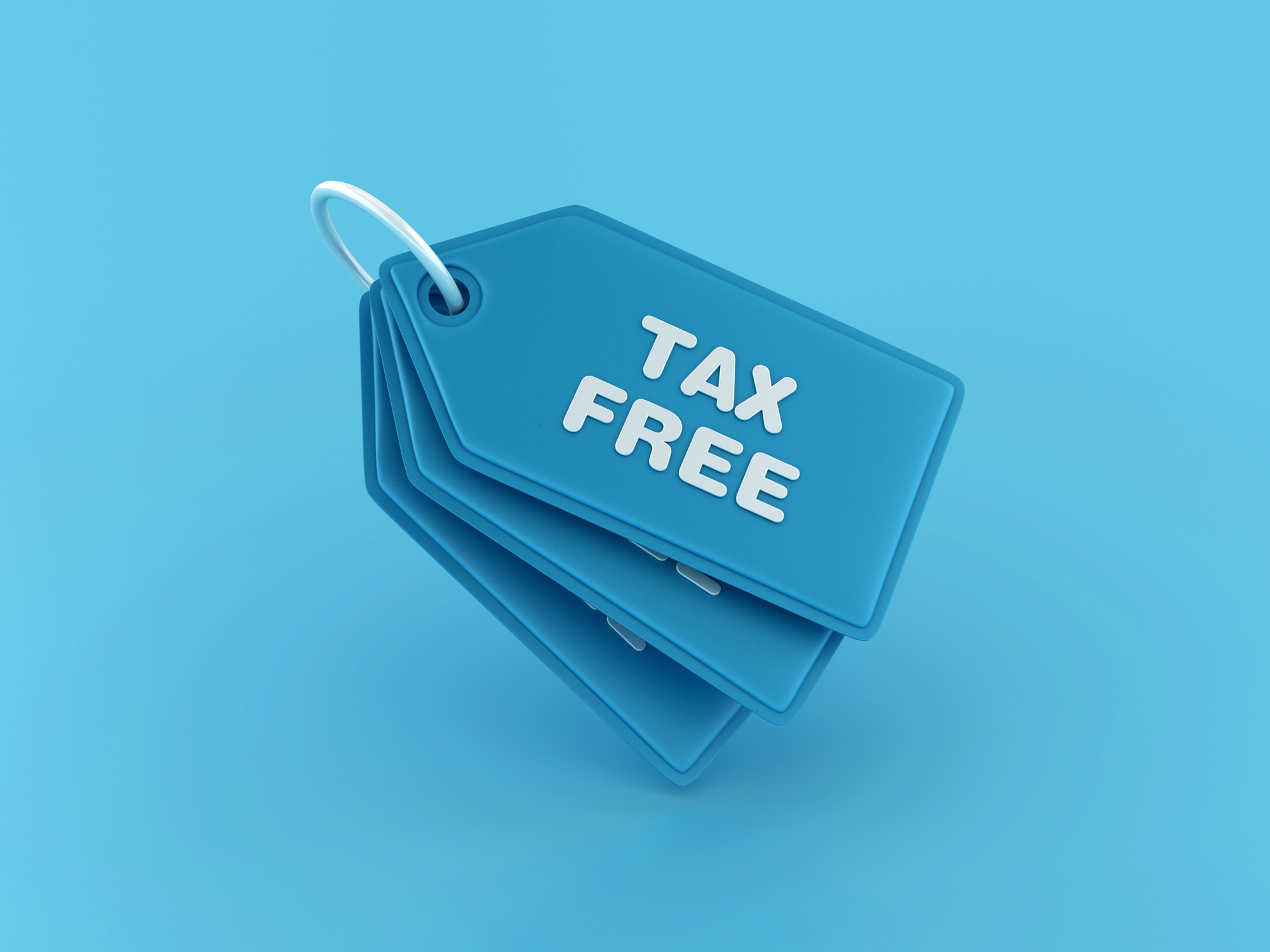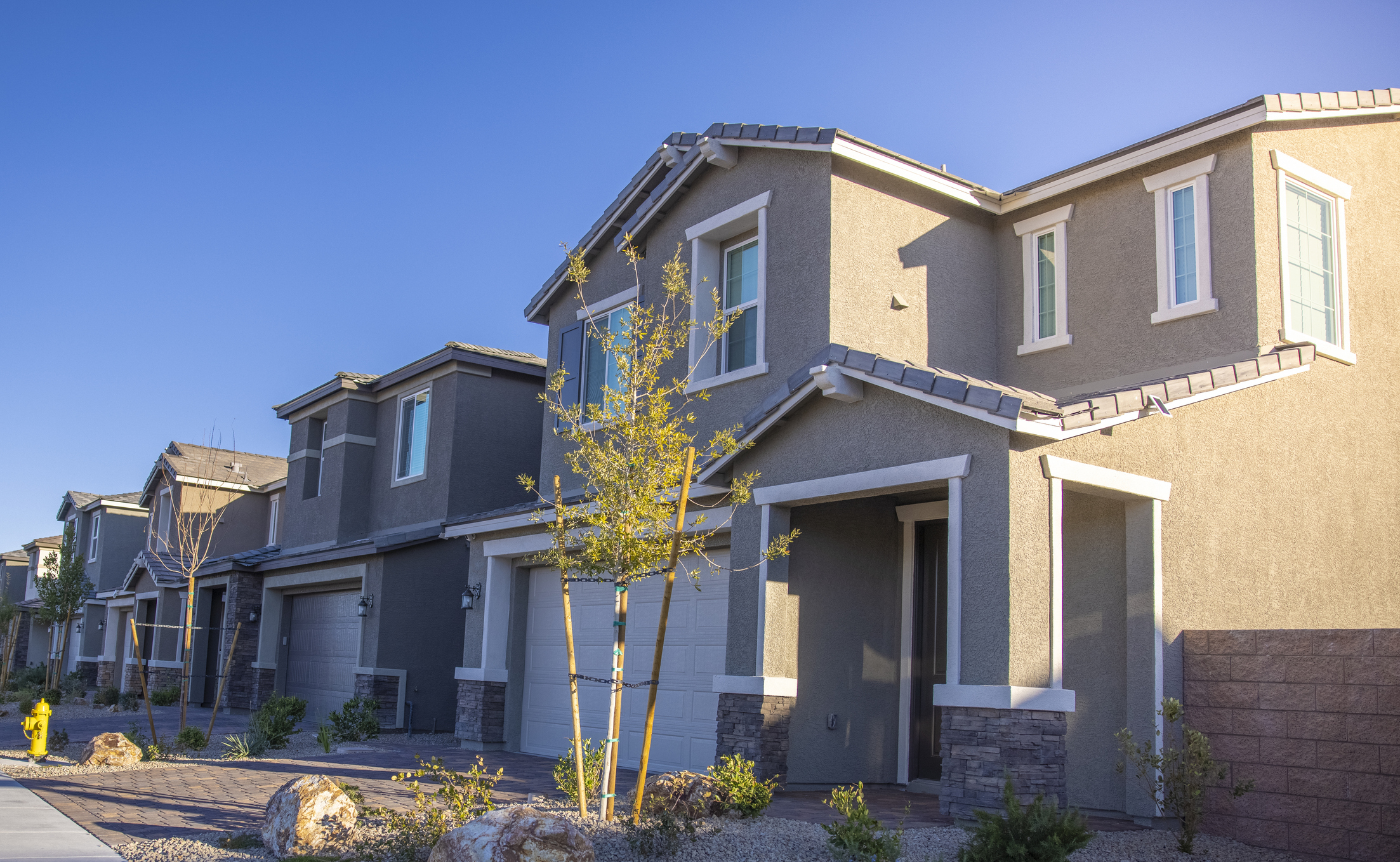Five States With No Sales Tax in 2025: What to Know
Is your state’s ban on sales tax actually saving you money? Probably not as much as you might think.


As if prices for goods and services weren’t high enough, most state and local governments also impose a sales tax.
States and localities use sales taxes as a crucial revenue source, bolstering general funds for key government initiatives. These include public education, police and fire services, parks, and medical facilities. Together, state and local sales taxes can range anywhere from 0% to as high as 10.11%, according to data from the Tax Foundation.
Just as some states are income tax-free, a handful of states don’t levy a general state sales tax at all. Still, that doesn't mean you're in for a "free lunch" from a tax perspective.
From just $107.88 $24.99 for Kiplinger Personal Finance
Become a smarter, better informed investor. Subscribe from just $107.88 $24.99, plus get up to 4 Special Issues

Sign up for Kiplinger’s Free Newsletters
Profit and prosper with the best of expert advice on investing, taxes, retirement, personal finance and more - straight to your e-mail.
Profit and prosper with the best of expert advice - straight to your e-mail.
That's because while some states and localities opt out of taxing sales, residents often face a higher tax burden from other sources (like income or property taxes).
So, before we celebrate your sales tax savings at the checkout counter, let’s dive into other areas in states with no sales tax where you could see your tax burden rise.
What is sales tax?
A sales tax is imposed on goods and services at the point of sale. When you review your receipt, you’ll notice that the tax levied is a percentage of the purchase price of your service or product, added to your total bill amount.
According to the Tax Foundation, taxes levied at the point of sale generate an average of one-third of state tax revenue and are a significant resource for the 45 U.S. states that currently impose them. As mentioned, sales taxes can also function as a funding stream for local governments in some states.
How high can state and local sales taxes go?
Sales taxes can climb substantially depending on your location. As Kiplinger has reported, the states with the highest sales taxes in 2025 are Louisiana (10.11%), Tennessee (9.61%), Arkansas (9.48%), Washington (9.47%), and Alabama (9.44%).
What exactly can be taxed? Just about anything you purchase.
- Clothing
- Furniture
- Dry cleaning
- Electronics, and more.
And yes, in some cases, even resale items (like those from thrift stores) can be subject to a sales tax. Although there are some point-of-sale exemptions, such as the purchase of goods and services by state and local governments or nonprofits, can be tax-free.
Occasionally, states also offer sales tax holidays during back-to-school seasons or for disaster preparedness.
Overall, the average taxpayer can expect to pay over $1,100 per year in retail sales taxes each year.
States with no sales tax

The following states without sales tax are listed in alphabetical order. Also keep in mind that while some of these states have no statewide sales tax, some localities can add their own sales tax.
1. Alaska
Before you pack up your bags and move to The Last Frontier State, you should know that while Alaska is one of the five states that does not impose a sales tax, local governments have the authority to institute a sales tax.
Alaska has largely depended on the extraction of gas and oil to sustain its economy, making up nearly 85% of its state revenue. Other important industries include timber, mining, agriculture, fishing and tourism, according to the state government.
Local tax:
Although Alaska doesn’t impose a statewide sales tax, local governments levy an average sales tax of 1.82% at the point of sale. According to the Tax Foundation, folks can expect to be taxed up to 7.85% depending on their location.
The state government allows local municipalities to institute retail taxes because while property tax can be a prime revenue source for some communities, smaller municipalities may not have enough of a resident base to support local funds.
Property tax:
Significant areas of Alaska don’t have property taxes, but the municipalities that do aren’t allowed to levy a property tax that exceeds 3%, per the state of Alaska.
According to research from ATTOM Data, in Alaska, a home worth $455,768 could face an average property tax equal to $4,151. The effective tax rate averaged 0.91% in 2024.
Those that don’t levy a property tax include:
- Northwest Arctic Borough
- Kusilvak Census Area
- Copper River Census Area
Income Tax:
As a bonus, Alaskans don’t pay income tax. That makes the state one of the few states with no income tax as well.
2. Delaware
Delaware has no state or local sales taxes, making it a tax-friendly choice for residents and visitors alike. It’s worth noting that, in response, New Jersey halved its sales tax rate to a reduced rate of 3.3% on certain items sold in businesses located in Salem County — right along Delaware’s border.
Not every item sold in Salem County will be taxed at half the rate, but you can get a tax break on some items (including but not limited to):
- Books and stationery
- Furniture and carpeting
- Business supplies
- Computer hardware and appliances
Property tax:
Property taxes in Delaware are among the lowest in the country at just 0.41%, according to ATTOM Data. A household with an average property valued at $512,245, could face an estimated property tax bill worth $2,081.
3. Montana
Montana foregoes a statewide and local sales tax, but if you’re a tourist or a local that’s interested in staying at a hotel, motel, bed and breakfast, guest ranch, resort, or campground, you’ll face a unique lodging facility use tax equal to 4%.
These locations can also levy sales taxes on base rental charges on campgrounds or rental vehicles.
Where can you run into a local sales tax? Some locations include:
- Central Montana
- Glacier Country
- Missouri River Country
- Yellowstone Country
- Southwest Montana
Income tax:
As for income taxes, Montana residents can expect a graduated tax rate that ranges from 4.70% to 5.90% depending on their income, data from the Tax Foundation showed.
Property tax:
For homeowners in Montana, the average property tax rate is 0.72%, according to the latest research from ATTOM Data. That means the typical household with a median-priced home of $467,815 can expect to pay roughly $3,384 in property taxes each year.
4. New Hampshire
The Granite State doesn’t impose any statewide sales taxes, nor does it impose any local taxes in this regard. What’s more, residents don’t have to pay any income tax.
New Hampshire repealed its income tax on interest and dividends in 2025, giving residents some tax relief.
So how does New Hampshire build revenue? Well, the state leans heavily on property taxes to come up with cash to fund its state and local government programs and services.
Property tax:
New Hampshire’s property taxes are 1.27%, marking them one of the states with the highest taxes. That means a homeowner with a median-priced home at $648,164 can expect to pay a whopping $10,134 in property taxes each year.
You may be able to lower your property tax bill by applying to property tax relief programs. The new state and local tax (SALT) deduction cap is higher this year, due to President Donald Trump’s newly enacted tax legislation. That can also help some homeowners lower their tax burden in 2026.
5. Oregon
The Beaver State doesn’t impose a statewide sales tax, but it does have some restrictions when it comes to your vehicle.
Oregonians who purchase a new vehicle out-of-state will have to pay a vehicle use tax, which will be one-half of 1% due on the retail price of the taxable vehicle.
Local tax:
The state of Oregon doesn’t impose a general sales tax, but there are other taxes you should be aware of.
Income tax:
Aside from potentially facing a local sales tax, state residents have to pay among the highest income taxes in the country. Oregon has a graduated state individual income tax, with rates that range from 4.75% to 9.9%, per the Tax Foundation.
Property tax:
Oregon’s property taxes stood at 0.81%, which can still pile on a bit to your tax bill, according to research by ATTOM Data. Homeowners with a typical property valued at $591,688 can expect to pay about $4,807 in property taxes annually.
State without sales tax and your overall tax burden
Depending on where you live, states and local governments impose taxes to collect crucial funds for essential services like transportation, road repairs, public schools, and police and fire districts, to name just a few.
While only the five states mentioned above offer a tax break on sales tax, as a resident or local business owner, you may face higher taxes in other ways, like:
- Property tax
- Corporate tax
- Income tax
The overall tax burden can be a dealbreaker, in some cases, for folks looking to relocate. Fortunately, states also offer several tax relief measures for residents. So, make sure to evaluate all of your options before making a big move.
Related Content:
Profit and prosper with the best of Kiplinger's advice on investing, taxes, retirement, personal finance and much more. Delivered daily. Enter your email in the box and click Sign Me Up.

Gabriella Cruz-Martínez is a finance journalist with 8 years of experience covering consumer debt, economic policy, and tax.
Gabriella’s work has also appeared in Yahoo Finance, Money Magazine, The Hyde Park Herald, and the Journal Gazette & Times-Courier.
As a reporter and journalist, she enjoys writing stories that empower people from diverse backgrounds about their finances, no matter their stage in life.
-
 My Top 10 Stock Picks for 2026
My Top 10 Stock Picks for 2026Each year, we ask an expert to pick 10 stocks that have the potential to beat the market over the next 12 months. Here are his choices for 2026.
-
 Special Report: The Future of American Politics
Special Report: The Future of American PoliticsThe Kiplinger Letter The Political Trends and Challenges that Will Define the Next Decade
-
 We're Still Bullish on Stocks
We're Still Bullish on StocksWe're still bullish on stocks for 2026, but now is the time for investors to pull in their horns and dial down risk.
-
 Retirees in These 7 States Could Pay Less Property Taxes Next Year
Retirees in These 7 States Could Pay Less Property Taxes Next YearState Taxes Retirement property tax bills could be up to 65% cheaper for some older adults in 2026. Do you qualify?
-
 Estate Tax Quiz: Can You Pass the Test on the 40% Federal Rate?
Estate Tax Quiz: Can You Pass the Test on the 40% Federal Rate?Quiz How well do you know the new 2026 IRS rules for wealth transfer and the specific tax brackets that affect your heirs? Let's find out!
-
 5 Types of Gifts the IRS Won’t Tax: Even If They’re Big
5 Types of Gifts the IRS Won’t Tax: Even If They’re BigGift Tax Several categories of gifts don’t count toward annual gift tax limits. Here's what you need to know.
-
 The 'Scrooge' Strategy: How to Turn Your Old Junk Into a Tax Deduction
The 'Scrooge' Strategy: How to Turn Your Old Junk Into a Tax DeductionTax Deductions We break down the IRS rules for non-cash charitable contributions. Plus, here's a handy checklist before you donate to charity this year.
-
 Tax Refund Alert: House GOP Predicts 'Average' $1,000 Payouts in 2026
Tax Refund Alert: House GOP Predicts 'Average' $1,000 Payouts in 2026Tax Refunds Here's how the IRS tax refund outlook for 2026 is changing and what steps you can take now to prepare.
-
 New IRS Changes to FSA Contribution Limits for 2026: What to Know
New IRS Changes to FSA Contribution Limits for 2026: What to KnowHealth Care Flexible Spending Accounts have tax advantages worth looking into, especially in light of new IRS changes.
-
 Is a New $25,000 Health Care Tax Deduction Coming in 2026?
Is a New $25,000 Health Care Tax Deduction Coming in 2026?Tax Policy A proposal from GOP Sen. Josh Hawley adds to the chatter about health care affordability.
-
 Are You Middle-Class? Here's the Most Tax-Friendly State for Your Family
Are You Middle-Class? Here's the Most Tax-Friendly State for Your FamilyTax Tips We found the state with no income tax, low property tax bills and exemptions on groceries and medicine.